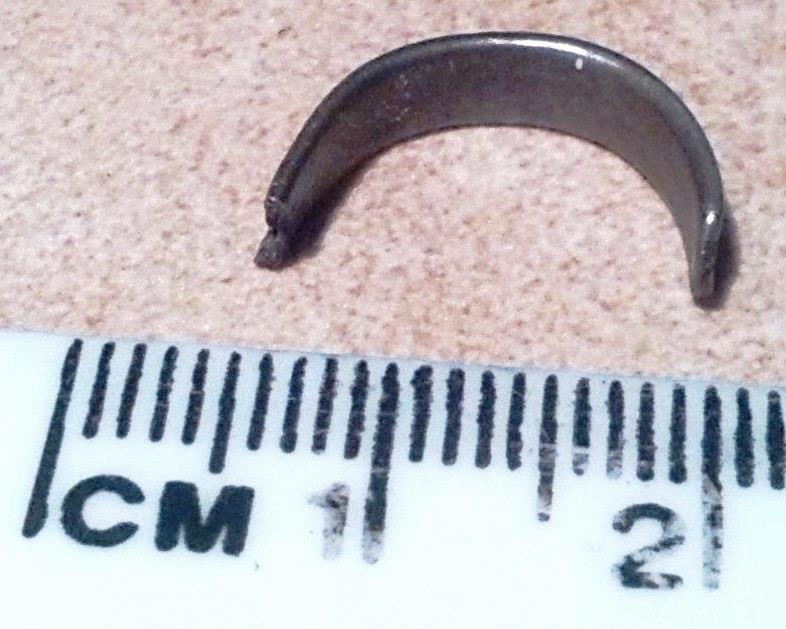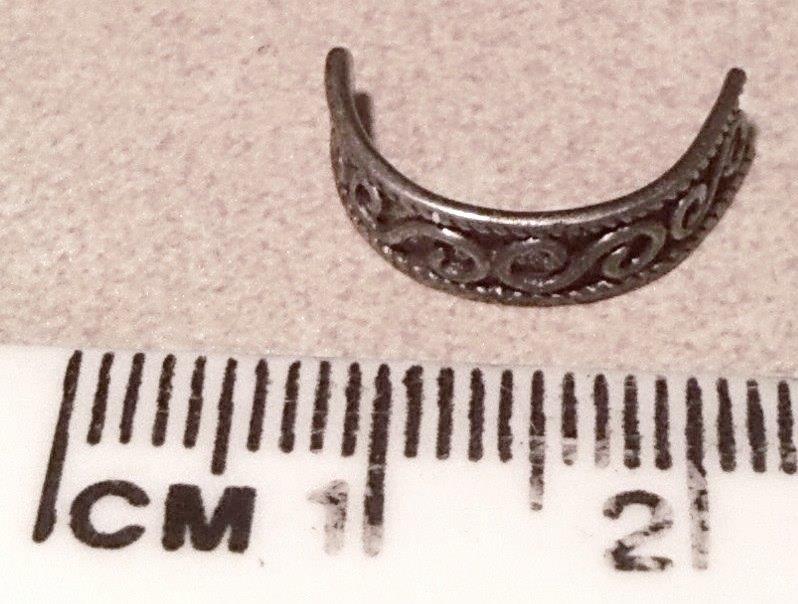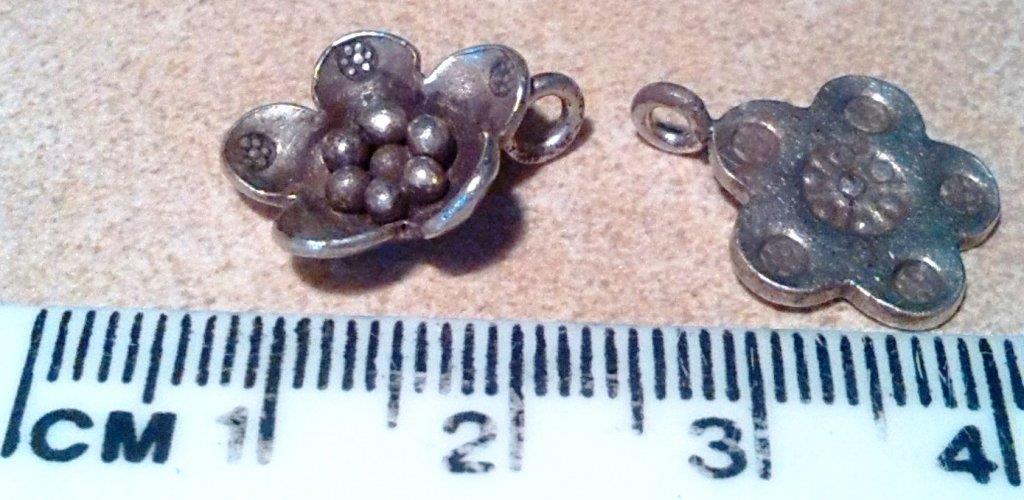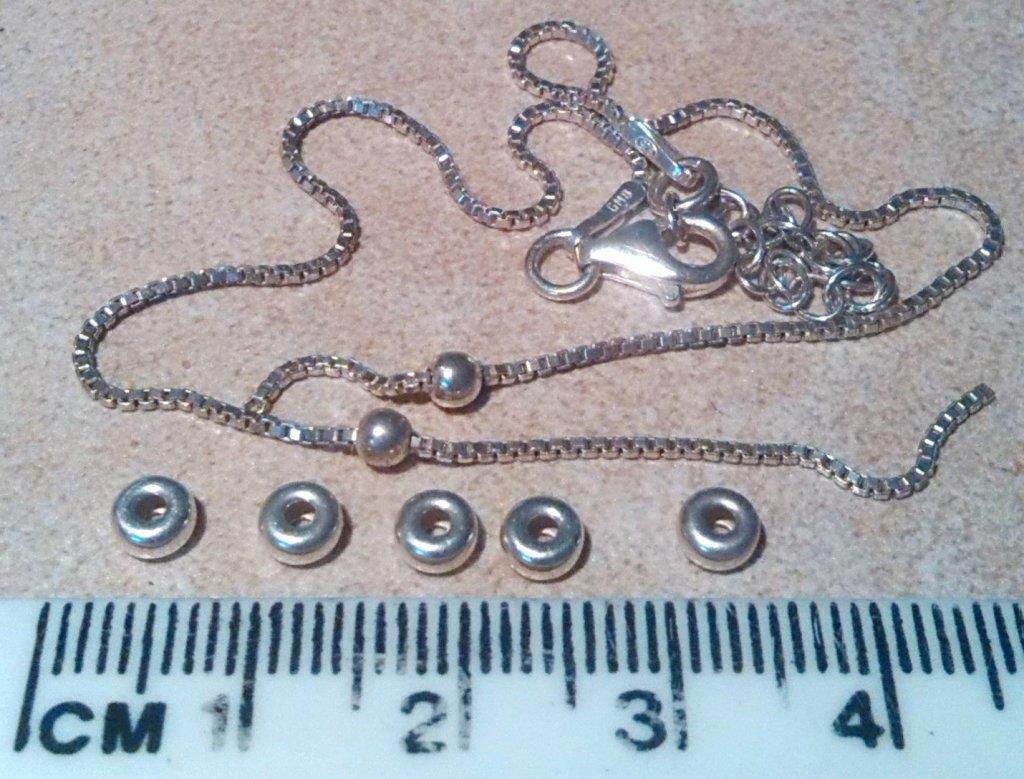With the onset of cooler, squally, winter weather, Perths endless golden beaches are less attractive places to spend my mornings. Its a good time to review my summer/autumn finds and consider lessons learned from hours and hours of beachcombing during the first half of 2015.
For me, a key part of detecting effectively is learning to resist my bull at a gate tendencies and work more methodically and meticulously. Several times this year Ive made identification mistakes with finds, in my excitement and haste to get on with the days hunt, so I thought it might help other impatient treasure seekers to review these learnings too.
Exhibit A is a half-circle of thin, stiff, silvery metal that I assumed was a broken decorative band from a pen cap or perhaps a make-up container. When I got home, washed it thoroughly and examined it under a bright light and magnification, it was evident that it was very finely worked, almost certainly silver and probably half of a broken toe ring (hence the rounded end). When Id found it on the beach, Id briefly searched the immediate vicinity before moving on, but now that I recognised it as jewellery rather than interesting trash, I wanted to scan the area more thoroughly for the missing half. Unfortunately though, I didnt have any way of knowing exactly where my find location had been: Oops! I went back a few days later and had a good hunt around, but no luck in finding the missing half-ring. I couldnt narrow down the location to less than about a 20m x 2m strip of deep sand and even then I wasnt entirely sure that I was searching in the right place.


Exhibit B is two silver flowers found a couple of metres apart in deep, dry sand just below where a pathway through dunes entered a beach. I assumed these finds were from separate earring drops, although no other components were found. It wasnt until I got home and examined them in detail that it occurred to me that they were too similar to be separate losses and were most likely both charms from the same broken charm bracelet. So back I went the next day to where I thought Id found them, in search of more charms and hopefully the broken chain that theyd come from. Alas, I had no further success, although because of nearby landmarks I was a bit surer of the find location than with Exhibit 1.

Exhibit C was my first ever silver chain and in my excitement to show it off to a companion, I left the spot without thoroughly searching the area around the find. When I got it home and washed away all of the fine sand in and between the tiny links, I found that the chain was shedding its silver beads, so the next day I returned to the location and after some very careful detecting, succeeded in finding several more loose beads that Id left behind in the sand the day before.

I realise that the actual value of these items is trivial, but for me, its what I learned from them that counts: taking more care to examine and identify finds when they are first discovered, can save detecting time and frustration later, when a return visit is necessary. This is particularly true in a beach environment, where wind, waves, beachgoers, beach grooming equipment and other detectorists are constantly shifting sand and changing things, making find locations difficult to pinpoint again afterwards, even from day to day.
I hope that by discussing and illustrating my mistakes and what I learnt from them, others here may avoid similar issues in the future.
For me, a key part of detecting effectively is learning to resist my bull at a gate tendencies and work more methodically and meticulously. Several times this year Ive made identification mistakes with finds, in my excitement and haste to get on with the days hunt, so I thought it might help other impatient treasure seekers to review these learnings too.
Exhibit A is a half-circle of thin, stiff, silvery metal that I assumed was a broken decorative band from a pen cap or perhaps a make-up container. When I got home, washed it thoroughly and examined it under a bright light and magnification, it was evident that it was very finely worked, almost certainly silver and probably half of a broken toe ring (hence the rounded end). When Id found it on the beach, Id briefly searched the immediate vicinity before moving on, but now that I recognised it as jewellery rather than interesting trash, I wanted to scan the area more thoroughly for the missing half. Unfortunately though, I didnt have any way of knowing exactly where my find location had been: Oops! I went back a few days later and had a good hunt around, but no luck in finding the missing half-ring. I couldnt narrow down the location to less than about a 20m x 2m strip of deep sand and even then I wasnt entirely sure that I was searching in the right place.


Exhibit B is two silver flowers found a couple of metres apart in deep, dry sand just below where a pathway through dunes entered a beach. I assumed these finds were from separate earring drops, although no other components were found. It wasnt until I got home and examined them in detail that it occurred to me that they were too similar to be separate losses and were most likely both charms from the same broken charm bracelet. So back I went the next day to where I thought Id found them, in search of more charms and hopefully the broken chain that theyd come from. Alas, I had no further success, although because of nearby landmarks I was a bit surer of the find location than with Exhibit 1.

Exhibit C was my first ever silver chain and in my excitement to show it off to a companion, I left the spot without thoroughly searching the area around the find. When I got it home and washed away all of the fine sand in and between the tiny links, I found that the chain was shedding its silver beads, so the next day I returned to the location and after some very careful detecting, succeeded in finding several more loose beads that Id left behind in the sand the day before.

I realise that the actual value of these items is trivial, but for me, its what I learned from them that counts: taking more care to examine and identify finds when they are first discovered, can save detecting time and frustration later, when a return visit is necessary. This is particularly true in a beach environment, where wind, waves, beachgoers, beach grooming equipment and other detectorists are constantly shifting sand and changing things, making find locations difficult to pinpoint again afterwards, even from day to day.
I hope that by discussing and illustrating my mistakes and what I learnt from them, others here may avoid similar issues in the future.



